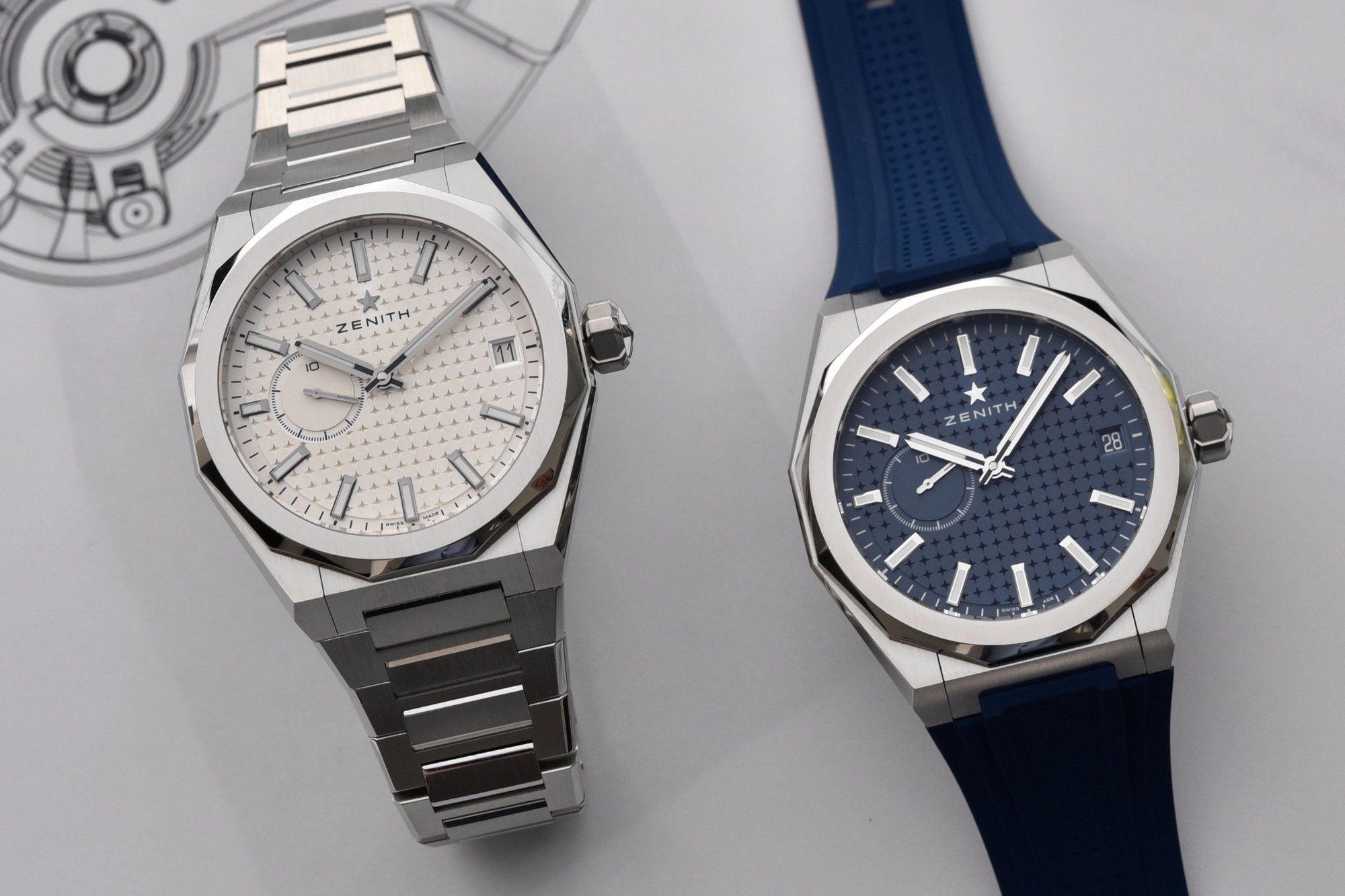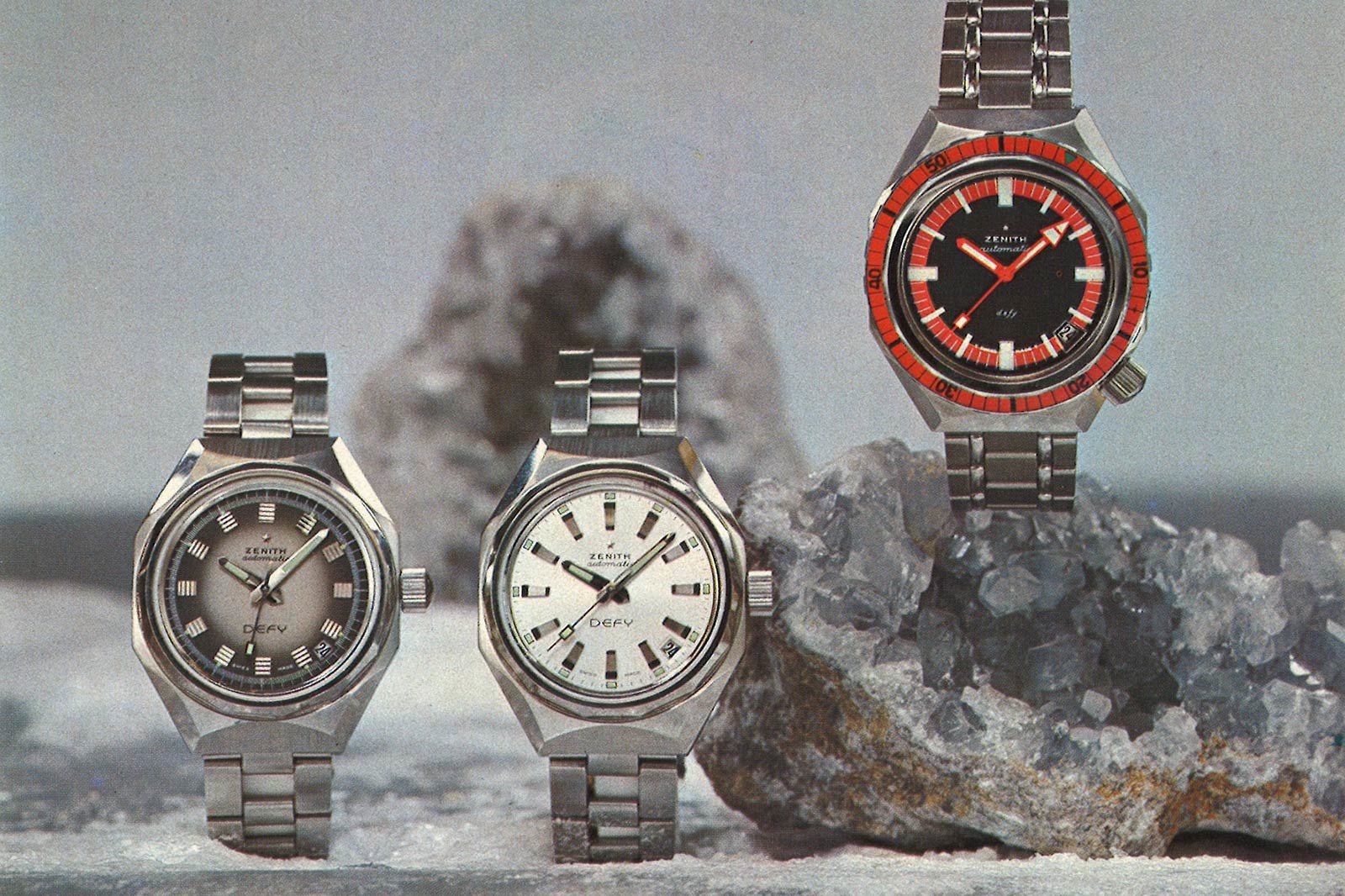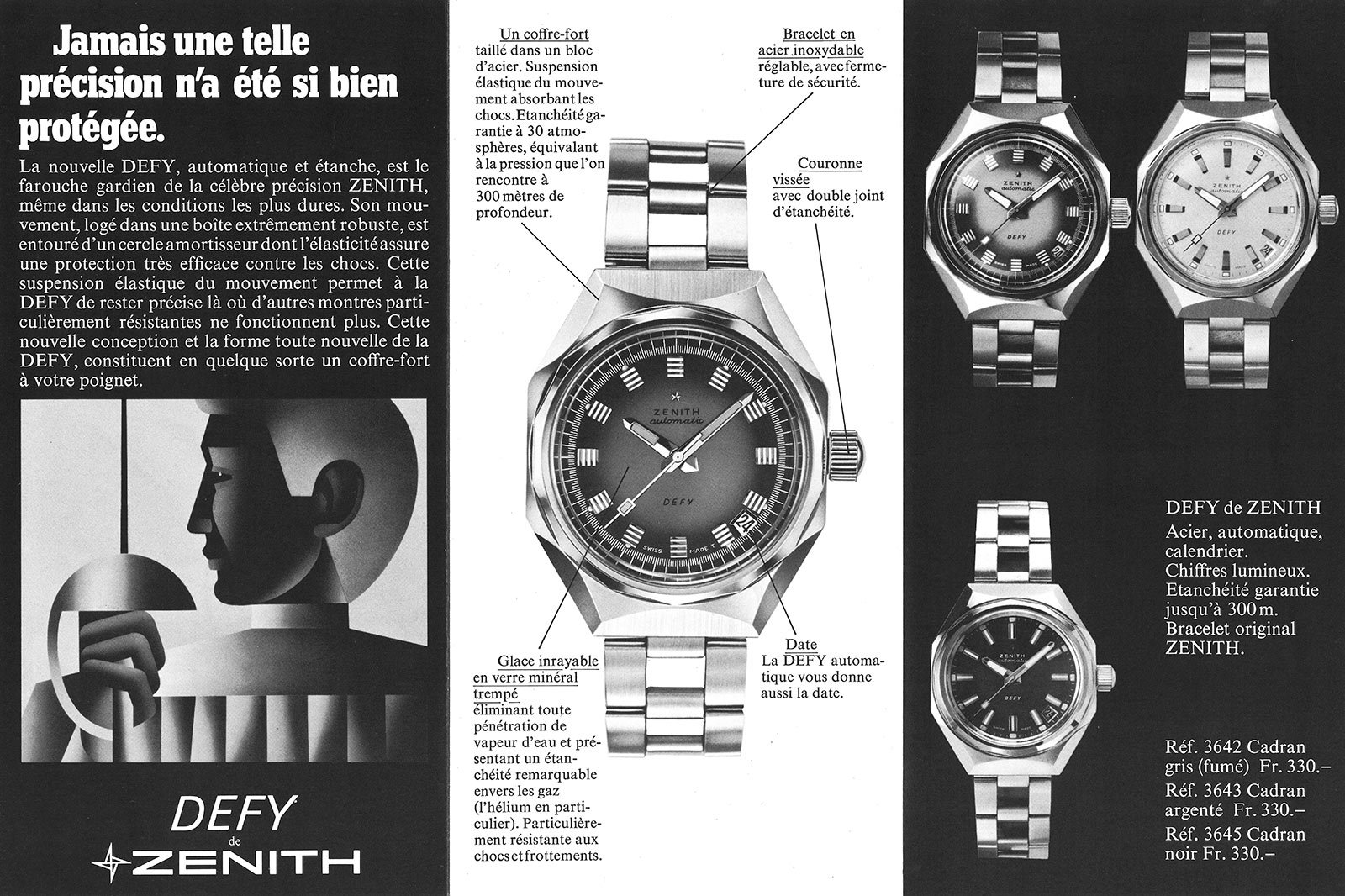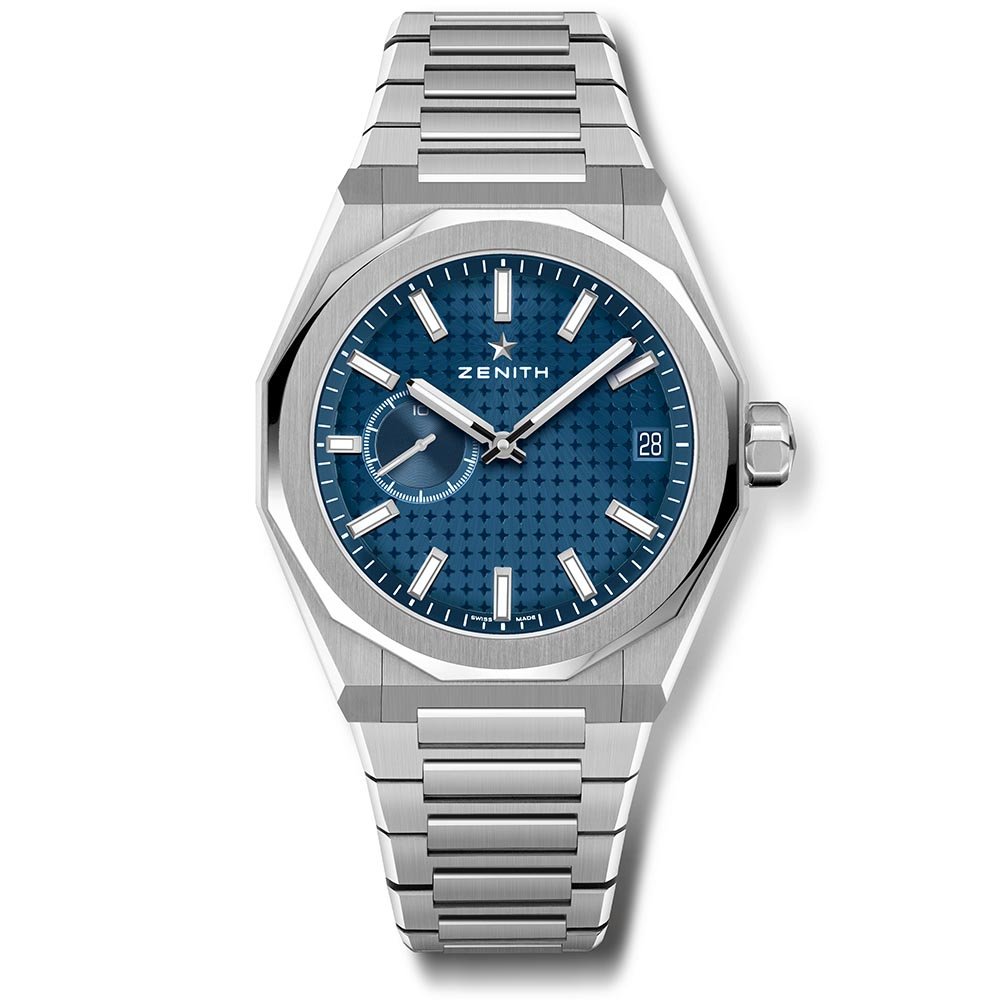Exploring the history of the Zenith Defy watch

Published: Aug 03, 2022
A little over 50 years ago, a new sports watch broke out into the watchmaking scene. Its name was the Defy watch, developed and launched by the famous watchmaker, Zenith. Today, the Defy watch is still classed as one of the brand’s most creative and interesting watches. Recently, the brand has collaborated with the prestigious car manufacturer, Land Rover and has also released the women’s sub-series, named the Zenith Defy Midnight. Still, it is the history of the Zenith Defy watch that adds real value and interest to every other watch to closely follow in its footsteps.
What is interesting to note, is that although the Zenith Defy watch was not as sought-after as similarly-styled steel sports watches from the likes of Omega, Rolex and Audemars Piguet, for example - it was still considered a very avant-garde design for its time and was packed full of innovative, next-generation technology. Zenith was also largely focusing on its El Primero watch during this time, an icon that no doubt stole a little of the Defy watch’s limelight. Despite this, the first Defy model will always be remembered for its strong, bold aesthetic, paired with its superior selection of ultra-sophisticated materials.
Before we jump into the history of the Zenith Defy watch, let’s look at the key characteristics of the popular sports model and why it has become such a must-have timekeeping tool to own.

Facts about the Zenith Defy watch
Zenith watches from the Defy collection are renowned first and foremost for their robustness. Paired with this, the collection is also known for its elaborate designs that catch the eye. Many Zenith Defy watches can be picked out from across the room. Some of the top watches within the series offer complications that include 1/100th of a second chronograph features, tourbillons and impressive water-resistant capabilities that stretch to 1000 meters.
As its name suggests, this rugged tool watch defies the many damaging effects of external environments. These watches are incredibly shockproof, waterproof and generally very robust, making them great companions for extreme sports, water-based sports, diving, hiking, mountain exploring, biking, cave exploration and much more. The collection first came to be in the 1960s and has evolved since then, branching out into various sub-categories.
One of the most robust Defy watches from Zenith is the Defy Xtreme, which holds a very significant movement at its centre. The original El Primero movement was one of the first automatic chronograph movements to be developed and, for its time, promised a high balance frequency of 26,600 vibrations per hour. Thanks to its high frequency, the Defy Xtreme became one of the world’s most precise automatic chronograph calibres. The El Primero movement could measure 1/10ths of a second. When its successor arrived in the form of the Zenith Defy El Primero 21 watch in 2017, it needed to measure 1/100ths of a second. To do so, it required a new and improved movement with two independent swing and escapement systems. One of the balance wheels oscillates at 36,600 vibrations per hour, whilst displaying the time. The other oscillates at a staggering 360,600 vibrations per hour.
Only by comparing the design and aesthetic of the Zenith Defy watch from the 1970s to present-day models can we see just how the watch has evolved, from a chunky cushion-shaped piece of steel to the more refined and sleek look of the modern-day Zenith Defy Xtreme, for example.

The history of the Zenith Defy watch
The Zenith Defy watch began its career at the same time that the brand’s El Primero watch was released. It was equipped with a patented movement that featured a movement suspension system and was described as an all-round rugged tool watch for wearing every day of the week. The first model featured an octagonal shaped case and offered a 300-meter water resistance, a mineral glass front, a screw-down case, and a screw-down crown. These features alone demonstrated a well thought-through design that was clearly primed towards those in need of an outdoorsy yet stylish watch for facing all manner of extreme conditions. Make no mistake that the Zenith Defy watch was a leading and daring design for its day. These features became the foundations for many of the brand’s designs to come.
Whilst some watch enthusiasts may be under the wrong impression that the Defy watch died under the more successful El Primero, others have always been aware that although the brand focused heavily on this more popular watch - the remarkably accurate and tough design of the Defy has endured and stood the test of time. In 1971, Zenith strapped six watches to the back wheel spokes of a motorcycle during a speed contest at the Wembley stadium. Not surprisingly, all six of these Defy watches survived the test “very well.” In the same year, a Zenith Defy crossed the Channel on a monoski and, having checked its functionality and performance after the mission, was documented to be performing as well as it did before. Not long after that, the Le Locle-based brand expanded the collection with equally reliable watches for women.
When it was first released, the chunky and heavily faceted look of the Zenith Defy watch appeared similar in style to some of Gerald Genta’s icons that would take the world by storm. Quite possibly the Defy watch was before its time and didn’t receive the success that it may have done had it been released a few years down the line. All things considered, however, it was no huge surprise that the next generation of Defy watches to follow imparted a somewhat toned-down design.
The Defy watch’s multifaceted look had been stripped away, giving way to the same 14-sided bezel but with a much more understated presence. These second-generation Zenith Defy watches looked a lot more like the rest of the brand’s catalogue. Cleaner, more refined and elegant. The first chronograph of the range had also been born, powered by the Zenith Manufacture Caliber 3019 PHC – an El Primero movement but with a date function.
Towards the end of the 1970s, quartz-powered watches were suffocating the luxury automatic watch industry. To keep up with the demand, Zenith evolved to suit the direction of many other watch brands and began making quartz-powered wristwatches. It would be a decision that Zenith would later reverse. In 2000 the brand was taken over by the LVMH group and six years later, the Defy collection was revived. The Defy Classic and Defy Xtreme watches soon made up 25% of the brand’s catalogue proving their worth as an indispensable tool for all kinds of outdoor extreme adventure and sports. Here, Zenith played around with some materials including bold rose gold iterations, lightweight titanium models, and steel and rubber versions.
In 2008, a movement placed on a gimbal system made for an entirely new concept by Zenith and was released inside the Defy Xtreme Zero watch. In the middle of 2017, Zenith went under some more changes. Chief Executive Officer Julien Tornare acknowledged the need for a more modern approach to watchmaking and thus developed the Defy Lab with a new type of oscillator etched from a wafer of silicon that combined the jobs of the balance, balance spring, and lever in one single piece. With almost ten times greater accuracy, the new movement finally went into serial production after an initial limited edition production. When it finally went into mass production, it powered the heart of the 2019 Zenith Defy Inventor watch. Its 129,600 oscillations are viewable from the dial-side of the watch, adding a unique feature to this design. Crafted from Aeronith -a high-tech aluminium composite - the bezel of this watch, which sits on top of a 44mm brushed titanium case, promised an incredibly lightweight feel on the wrist, since Aeronith is three times lighter than titanium – an already lighter and stronger alternative to stainless steel.
Since then, Zenith has released some more exquisite designs from the Defy collection including the Defy El Primero Double Tourbillon, which features two separate escapements along with a stopwatch function that can measure elapsed times to 1/100th second. The watch was also released in platinum and carbon, followed by the reinvention of the fusée-and-chain mechanism in the form of the Zenith Defy Fusée Tourbillon watch. This design was offered in platinum and carbon once again – the chain alone comprising 575 individually hand-assembled components.
The Zenith Defy watch will always be a sportier, bolder, and chunkier version of the famous El Primero watch. It may not have been as successful as the El Primero during the era of its release, but the appeal of the Defy watch has proved itself a thousand times over since its reintroduction. Now, back in full swing, the Defy watch is dominating the brand’s catalogue as well as the wrists of those who have always stood by its faultless ruggedness and its unwavering accuracy.


Zenith Defy Skyline
Reference: 03.9300.3620/51.I001
Case/Dial: 41mm Stainless steel, Blue
100
Movement: El Primero 3620, Self-winding
Functions: Hours, Minutes, Date, Small Seconds, 1/10th of a second counter at 9 o'clock, 60h power reserve
Strap: Stainless steel
Style: Dress